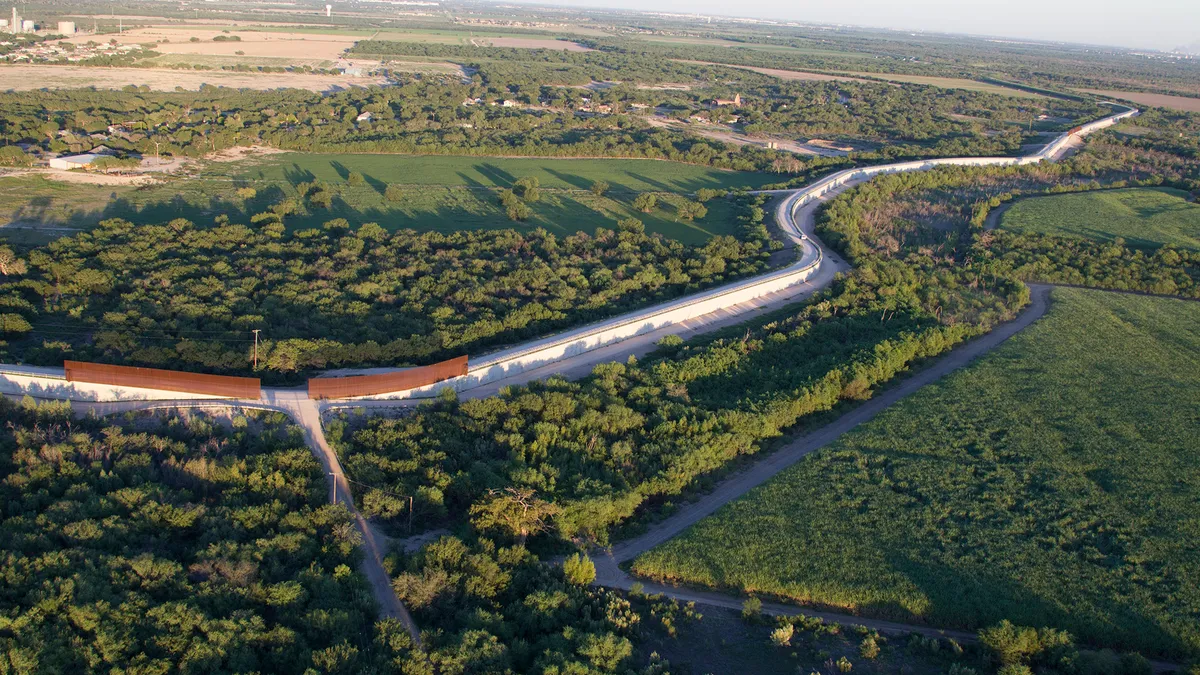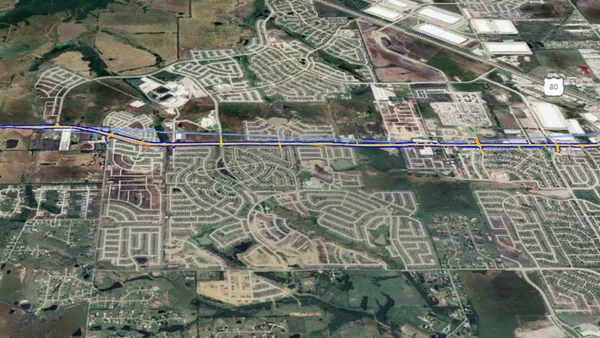Dive Brief:
-
Acting Secretary of Homeland Security Kevin K. McAleenan this week, as published in the Federal Register on Oct. 31, waived environmental and other regulations for U.S.-Mexico border wall work in three Texas counties in Customs and Border Protection's Rio Grande Valley Sector.
- McAleenan wrote that this latest waiver is in line with President Donald Trump's mandate, through executive order, to secure the border. The Department of Homeland Security has waived environmental and other regulations previously for additional border wall projects.
- “President Trump continues to fight for the safety of the American people by securing the Southern border," a White House spokesman told Construction Dive. " The Trump Administration will use every legal avenue available to enforce the immigration laws of this nation.”
Dive Insight:
More than 30 regulations are included in the latest waiver including the National Environmental Policy Act, the Endangered Species Act, the Clean Water Act, the National Historic Preservation Act and the Safe Drinking Water Act. It covers construction of physical barriers and roads and includes:
- creating access to the sites, as well as forming staging areas
- excavation and site work
- installation and maintenance of border barriers, roads and associated structures
- drainage infrastructure and erosion controls; and safety and security elements like lighting, cameras and sensors.
The work will take place near sensitive areas including the Lower Rio Grande Valley National Wildlife Refuge, the Santa Ana National Wildlife Refuge and the Mercedes Settling Basin, a reservoir in Hidalgo County, Texas, as well as along the Rio Grande River.
Construction of a border wall was a major focal point of Trump's 2016 presidential campaign, and the administration has pushed forward with this agenda, despite resistance from environmental groups and some lawmakers, who have not yet been able to stop the project via the courts.
One of the most contentious battles has been around the president's declaration of a national emergency at the border and his decision to divert military funds to help pay for $3.6 billion of construction. The Defense Department is deferring 127 of its own construction projects within the U.S. and abroad in order to be able to transfer the money to the Department of the Army, which will use it to build 11 segments — about 175 miles — of border barriers.
The largest of those projects is estimated at $1.3 billion for more than 50 miles of 52 miles of new primary pedestrian fencing along the Rio Grande River.
The president requested a total of $6.7 billion of military funds for border wall construction earlier this year after making his national emergency declaration. A federal judge in California, however, agreed with plaintiffs the Sierra Club and others that the wall did not meet the requirements of a national emergency and issued an injunction against the administration using $2.5 billion of Defense Department counter-narcotics funds for construction.
U.S. Circuit Judge Haywood Gilliam also indicated that he believed the Trump administration was out of bounds for going outside of the congressional approval process for funding. Soon after, however, the Supreme Court lifted that injunction.
In its ruling, the court said that construction at the border, using the $2.5 billion, could continue and that its stay will remain in place until the Ninth Circuit in California rules on the administration's appeal.
According to Bloomberg, the Pentagon will also waive environmental regulations in order to fast-track the border projects using military funds. The move is expected to chop years off the construction process since it will allow the Pentagon to sidestep lengthy environmental reviews.












